Abstract
Competence in Bacillus subtilis, assayed by the ability of cells to be transformed with bacterial deoxyribonucleic acid (DNA) or transfected by phage DNA, has been shown to occur in a single semisynthetic medium with peak activity occurring 3 hr after the cessation of logarithmic growth. No step-down conditions or culture manipulations were necessary for routine transfection of 1% of the population. The results demonstrate that bacteriophage DNA is a valid assay for studying the development of competence in B. subtilis. Predictions of workers using transforming bacterial DNA, who have suggested that competence in B. subtilis is associated with a specific phase of growth, are substantiated. The peak of competence is not affected by marked differences in the rate of growth during the logarithmic phase. The effect on development of competence by this procedure of some components (including casein hydrolysate, tryptophan, and histidine) which were routinely included in the transformation medium by other investigators has been determined by use of infectious phage DNA as an assay. We have demonstrated that tryptophan, as well as histidine, increases the transformation frequency—even in strains which do not have auxotrophic demands for these components. Glutamic acid and alanine depress optimal levels of transfection.
Full text
PDF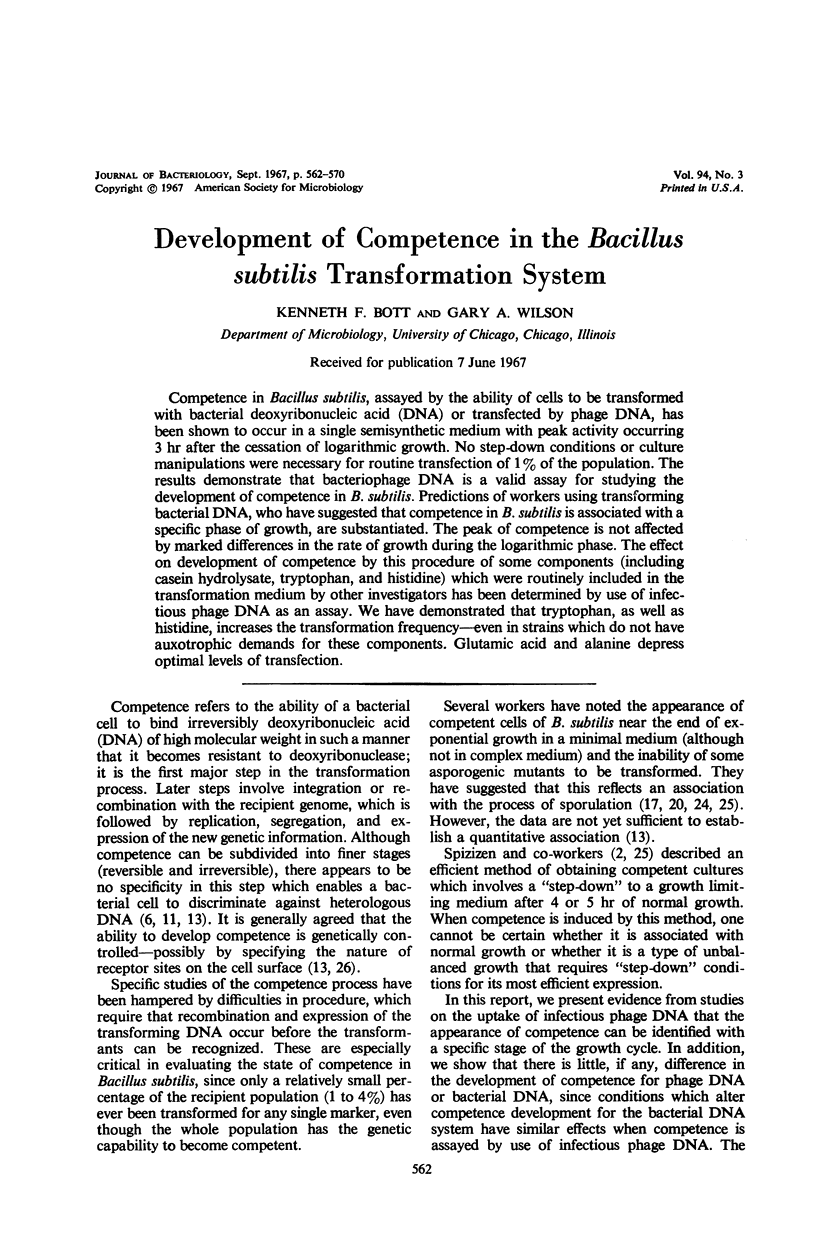
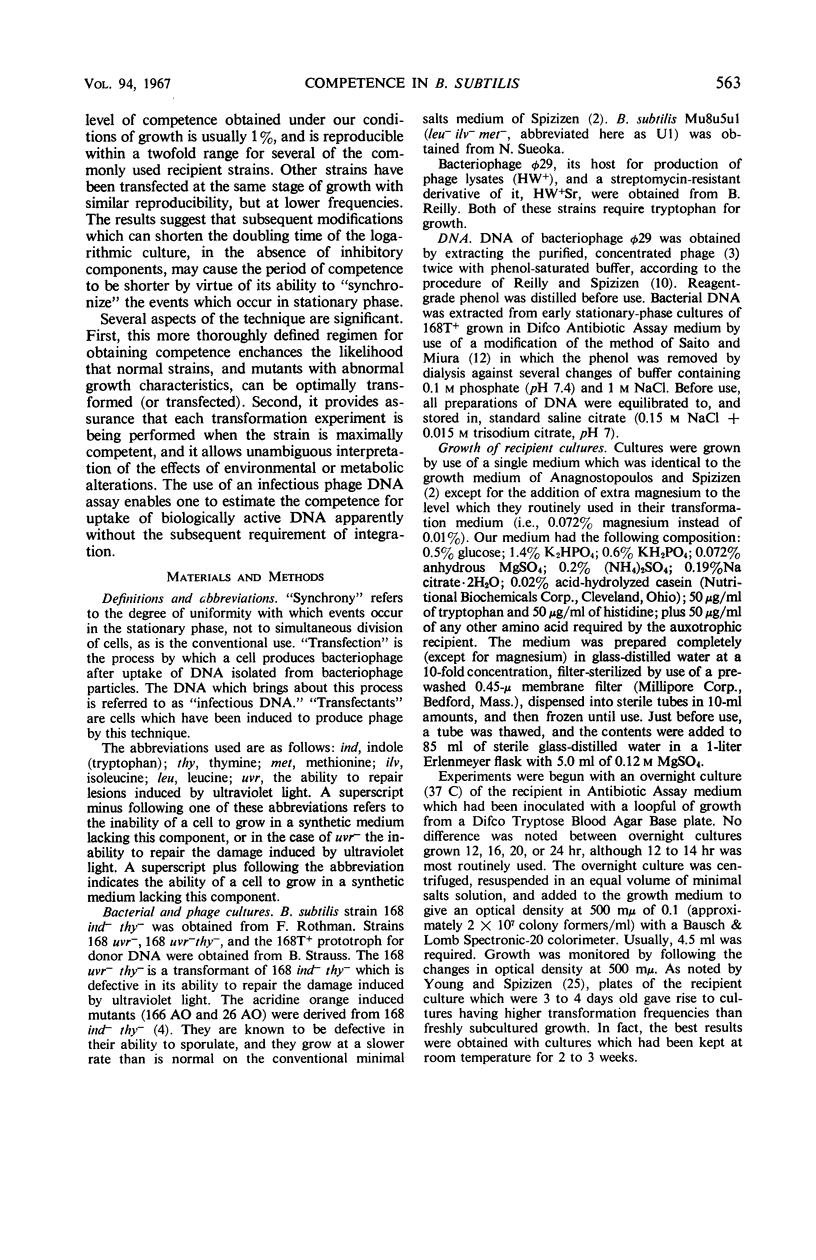

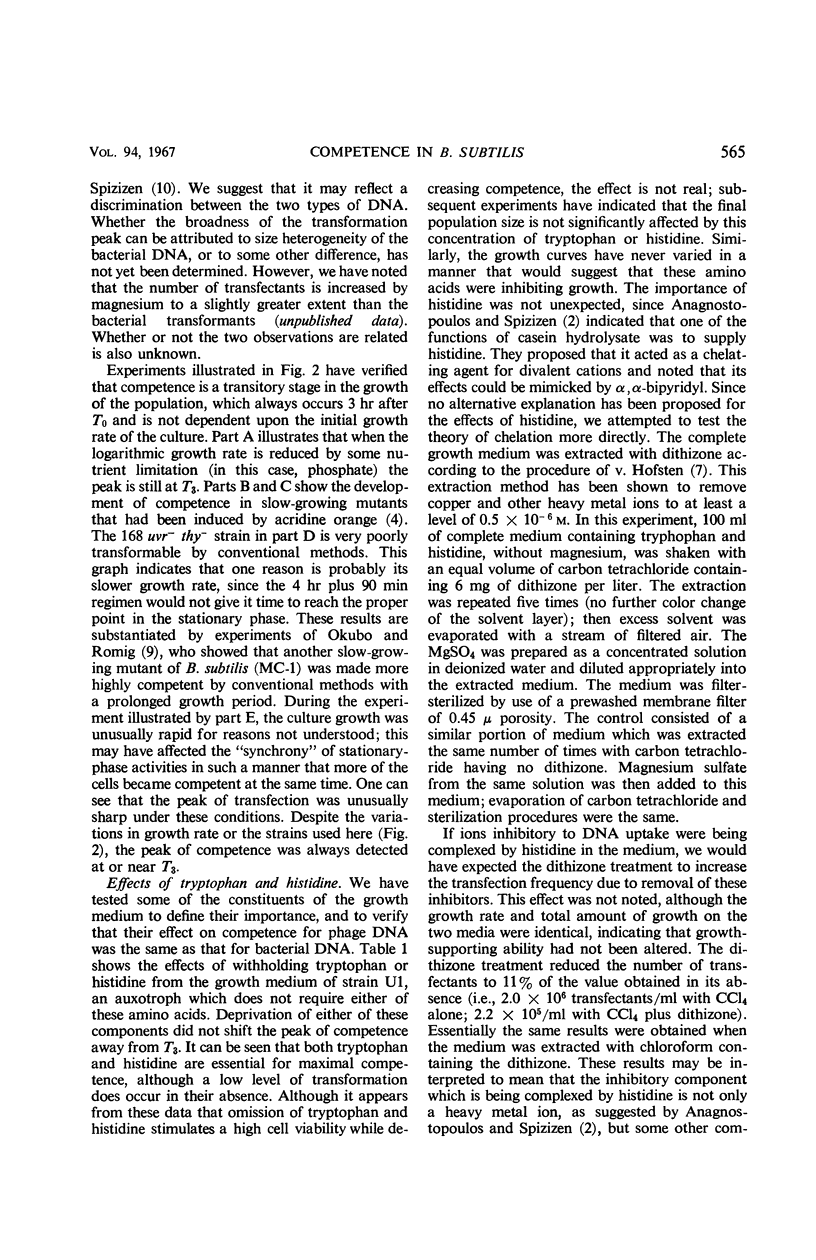
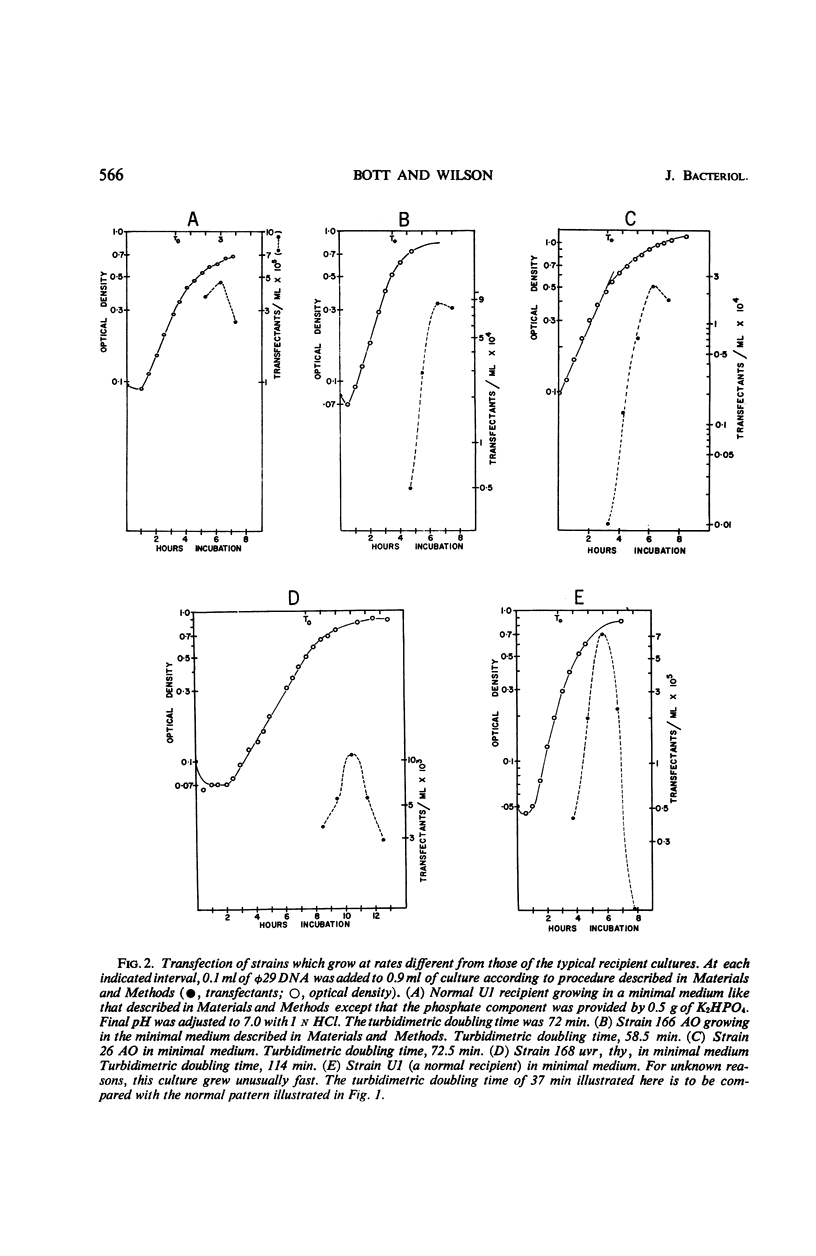
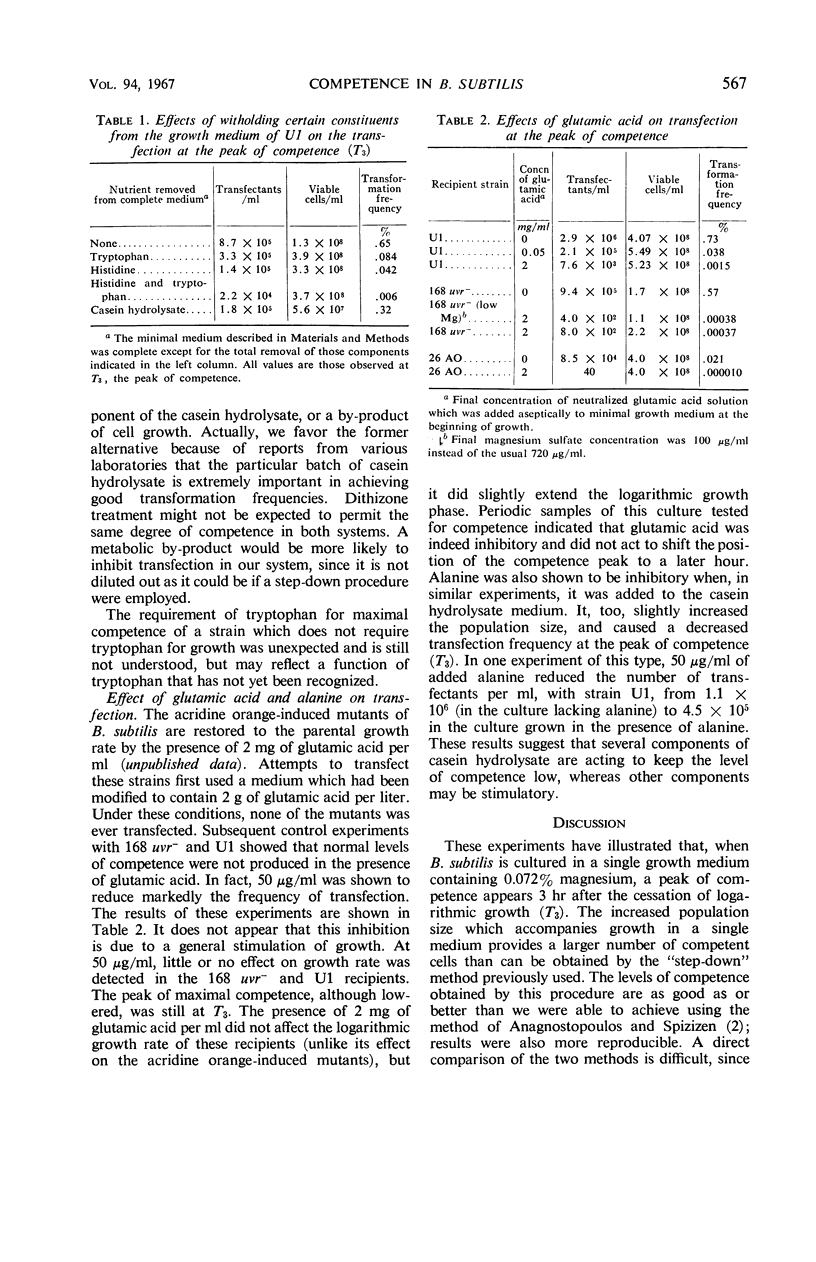
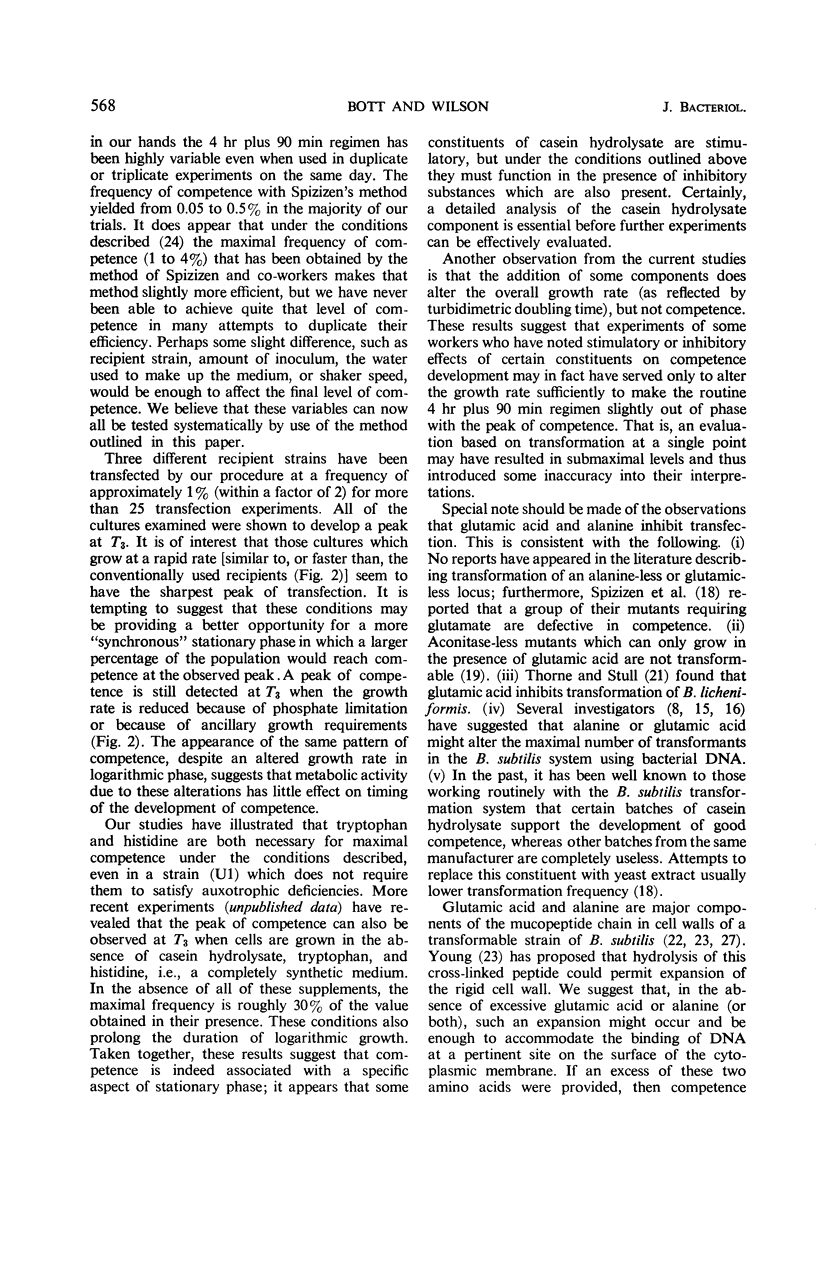
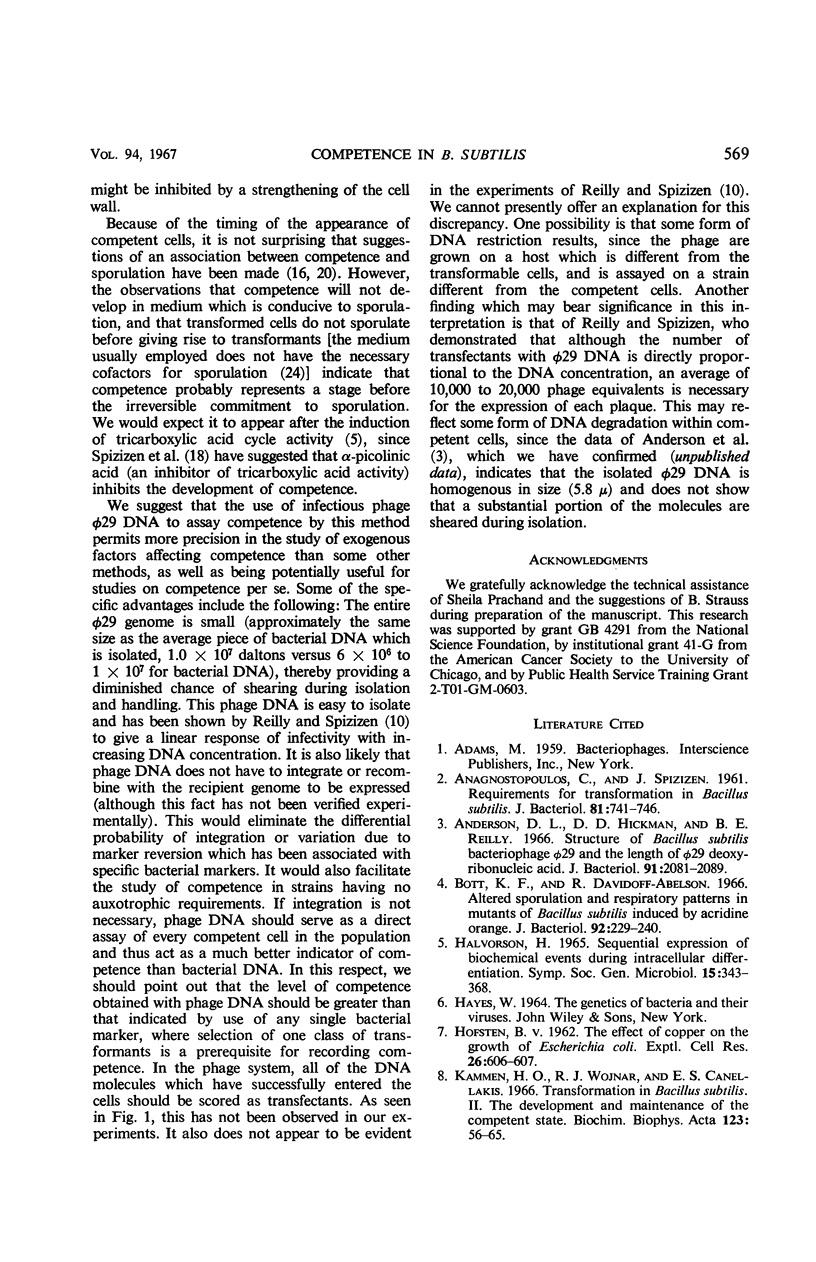
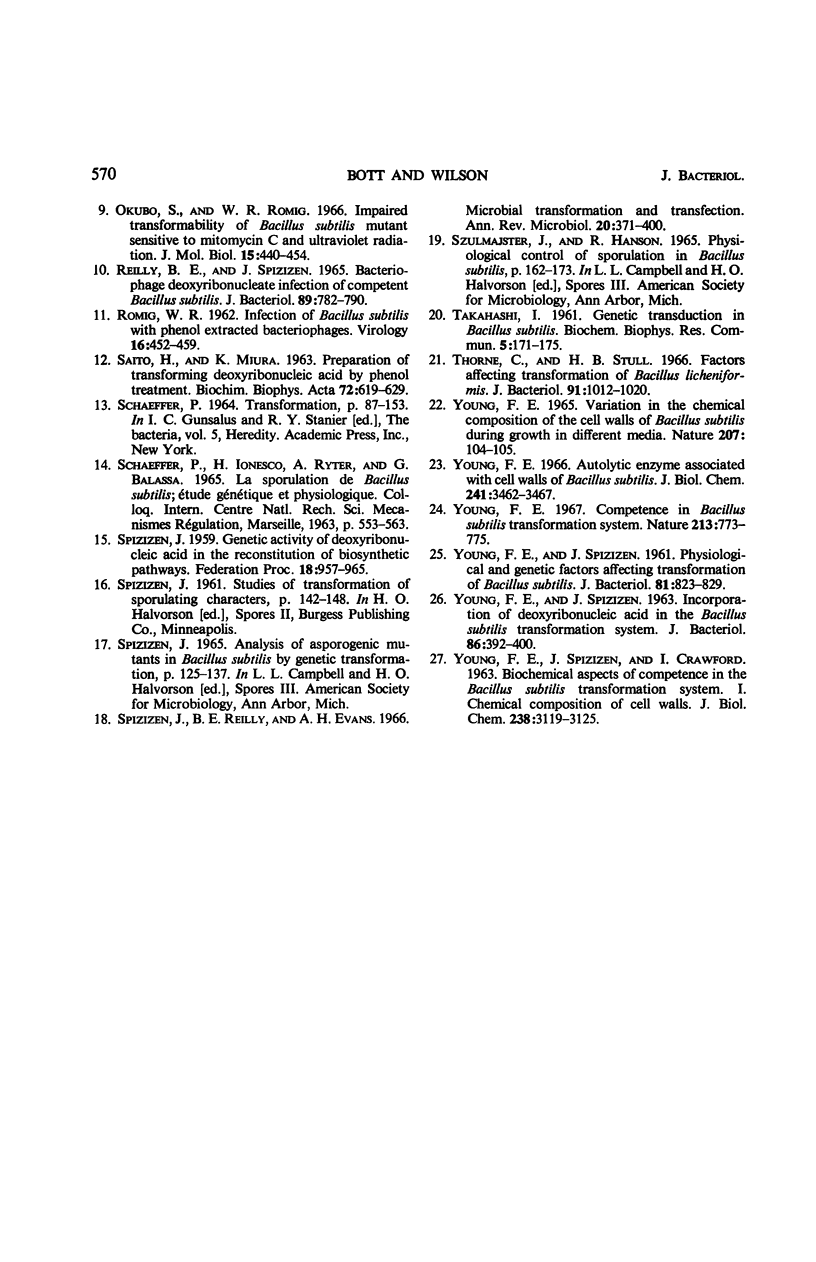
Selected References
These references are in PubMed. This may not be the complete list of references from this article.
- Anagnostopoulos C., Spizizen J. REQUIREMENTS FOR TRANSFORMATION IN BACILLUS SUBTILIS. J Bacteriol. 1961 May;81(5):741–746. doi: 10.1128/jb.81.5.741-746.1961. [DOI] [PMC free article] [PubMed] [Google Scholar]
- Anderson D. L., Hickman D. D., Reilly B. E. Structure of Bacillus subtilis bacteriophage phi 29 and the length of phi 29 deoxyribonucleic acid. J Bacteriol. 1966 May;91(5):2081–2089. doi: 10.1128/jb.91.5.2081-2089.1966. [DOI] [PMC free article] [PubMed] [Google Scholar]
- Bott K. F., Davidoff-Abelson R. Altered sporulation and respiratory patterns in mutants of Bacillus subtilis induced by acridine orange. J Bacteriol. 1966 Jul;92(1):229–240. doi: 10.1128/jb.92.1.229-240.1966. [DOI] [PMC free article] [PubMed] [Google Scholar]
- Kammen H. O., Wojnar R. J., Canellakis E. S. Transformation in Bacillus subtilis. II. The development and maintenance of the competent state. Biochim Biophys Acta. 1966 Jul 20;123(1):56–65. [PubMed] [Google Scholar]
- Okubo S., Romig W. R. Impaired transformability of Bacillus subtilis mutant sensitive to mitomycin C and ultraviolet radiation. J Mol Biol. 1966 Feb;15(2):440–454. doi: 10.1016/s0022-2836(66)80120-1. [DOI] [PubMed] [Google Scholar]
- REILLY B. E., SPIZIZEN J. BACTERIOPHAGE DEOXYRIBONUCLEATE INFECTION OF COMPETENT BACILLUS SUBTILIS. J Bacteriol. 1965 Mar;89:782–790. doi: 10.1128/jb.89.3.782-790.1965. [DOI] [PMC free article] [PubMed] [Google Scholar]
- SAITO H., MIURA K. I. PREPARATION OF TRANSFORMING DEOXYRIBONUCLEIC ACID BY PHENOL TREATMENT. Biochim Biophys Acta. 1963 Aug 20;72:619–629. [PubMed] [Google Scholar]
- SPIZIZEN J. Genetic activity of deoxyribonucleic acid in the reconstitution of biosynthetic pathways. Fed Proc. 1959 Dec;18:957–965. [PubMed] [Google Scholar]
- Spizizen J., Reilly B. E., Evans A. H. Microbial transformation and transfection. Annu Rev Microbiol. 1966;20:371–400. doi: 10.1146/annurev.mi.20.100166.002103. [DOI] [PubMed] [Google Scholar]
- TAKAHASHI I. Genetic transduction in Bacillus subtilis. Biochem Biophys Res Commun. 1961 Jun 28;5:171–175. doi: 10.1016/0006-291x(61)90104-8. [DOI] [PubMed] [Google Scholar]
- Thorne C. B., Stull H. B. Factors affecting transformation of Bacillus licheniformis. J Bacteriol. 1966 Mar;91(3):1012–1020. doi: 10.1128/jb.91.3.1012-1020.1966. [DOI] [PMC free article] [PubMed] [Google Scholar]
- YOUNG F. E., SPIZIZEN J., CRAWFORD I. P. BIOCHEMICAL ASPECTS OF COMPETENCE IN THE BACILLUS SUBTILIS TRANSFORMATION SYSTEM. I. CHEMICAL COMPOSITION OF CELL WALLS. J Biol Chem. 1963 Sep;238:3119–3125. [PubMed] [Google Scholar]
- YOUNG F. E., SPIZIZEN J. INCORPORATION OF DEOXYRIBONUCLEIC ACID IN THE BACILLUS SUBTILIS TRANSFORMATION SYSTEM. J Bacteriol. 1963 Sep;86:392–400. doi: 10.1128/jb.86.3.392-400.1963. [DOI] [PMC free article] [PubMed] [Google Scholar]
- YOUNG F. E., SPIZIZEN J. Physiological and genetic factors affecting transformation of Bacillus subtilis. J Bacteriol. 1961 May;81:823–829. doi: 10.1128/jb.81.5.823-829.1961. [DOI] [PMC free article] [PubMed] [Google Scholar]
- Young F. E. Autolytic enzyme associated with cell walls of Bacillus subtilis. J Biol Chem. 1966 Aug 10;241(15):3462–3467. [PubMed] [Google Scholar]
- Young F. E. Competence in Bacillus subtilis transformation system. Nature. 1967 Feb 25;213(5078):773–775. doi: 10.1038/213773a0. [DOI] [PubMed] [Google Scholar]
- Young F. E. Variation in the chemical composition of the cell walls of Bacillus subtilis during growth in different media. Nature. 1965 Jul 3;207(992):104–105. doi: 10.1038/207104b0. [DOI] [PubMed] [Google Scholar]
- von HOFSTEN The effect of copper on the growth of Escherichia coli. Exp Cell Res. 1962 Mar;26:606–607. doi: 10.1016/0014-4827(62)90170-2. [DOI] [PubMed] [Google Scholar]


